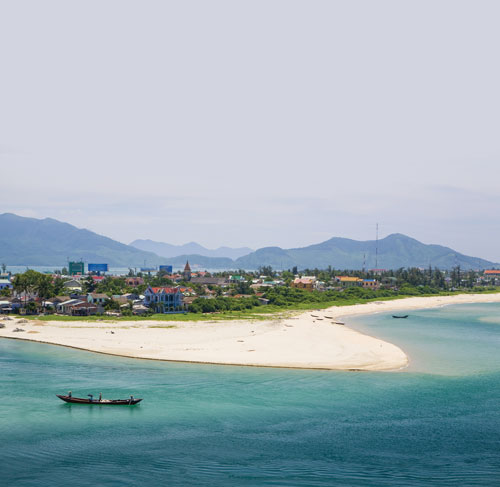Improved accessibility has brought greater visibility to Vietnam’s central coast alongside other issues.

An increase in international flights into Danang is allowing Vietnam’s central coast to better hold its own alongside Hanoi and Ho Chi Minh City, but the strengthening appeal is also bringing a new set of challenges for the Vietnamese trade.
In May, Bangkok Airways began four-times-weekly Bangkok-Danang service and Vietnam Airlines followed quickly on its heels with the launch of the same route.
Travellers responded so well to this that Bangkok Airways – barely three months into the launch – was already in discussion with Danang International Airport about potentially increasing the frequency of the service, a source told TTG Asia.
Jetstar Pacific in August started plying between Osaka and Danang, while Jetstar Asia chose Danang as the second Vietnamese gateway to fly to (after HCMC) in November 2015.
On how the prior lack of international flights placed limits on the region’s viability as a single destination for tourists on traditional package holidays, Alexander Leven, director of product development of Asia DMC, commented: “Not many group tours have (central Vietnam stays) in their itineraries. But (those that do) offer mostly Hoi An, and mostly for roundtrips.”
But this is looking set to change. Jess Yap, general manager at Country Holidays in Singapore, noted that the agency was “getting more interest these days from clients visiting central Vietnam as a mono destination”.
“We have welcomed an increasingly diverse guest profile (and) seen an increase in guests from neighbouring countries who enjoy the direct flights into Danang,” observed Michal Zitek, area general manager, Banyan Tree Banyan Tree Lang Co and Angsana Lang Co.
Amid this picture of change, several other developments in the region are hard to miss, such as the establishment of regional tourism promotion body Central Coast Vietnam, Leven shared, and the explosion of international-branded hotel chains onto the scene, particularly in Danang.
“Of course, many reasons (to visit the) region also (run) the risk of attracting the masses. While many like to market the destination as an upmarket golfer paradise, many smaller businesses want quick money and (go after other) target markets,” Leven remarked, echoing the industry’s prevailing dilemma about the influx of new visitors.
In recent months, several local agents in Danang have gone public with their concerns on the behaviour of tourists and how Chinese-run businesses have encroached on their profits.
The tourist influx is also straining the region’s capacity, Leven added. “The rise in arrivals from China is so fast this year that supply of transport, restaurants and tour guides are being put to the Another trade-off of the region’s enhanced mainstream appeal, he continued, was the building of high-rise beachfront hotels, which could compromise the luxury sell-points of the region’s tranquil coasts.
Yap also expressed similar regret over once-quaint attractions. “The increase in direct flights have allowed better accessibility… Sadly, (this also means) the old town of Hoi An will get more crowded.”
This article was first published in TTG Asia October 2016 issue. To read more, please view our digital edition or click here to subscribe.




















